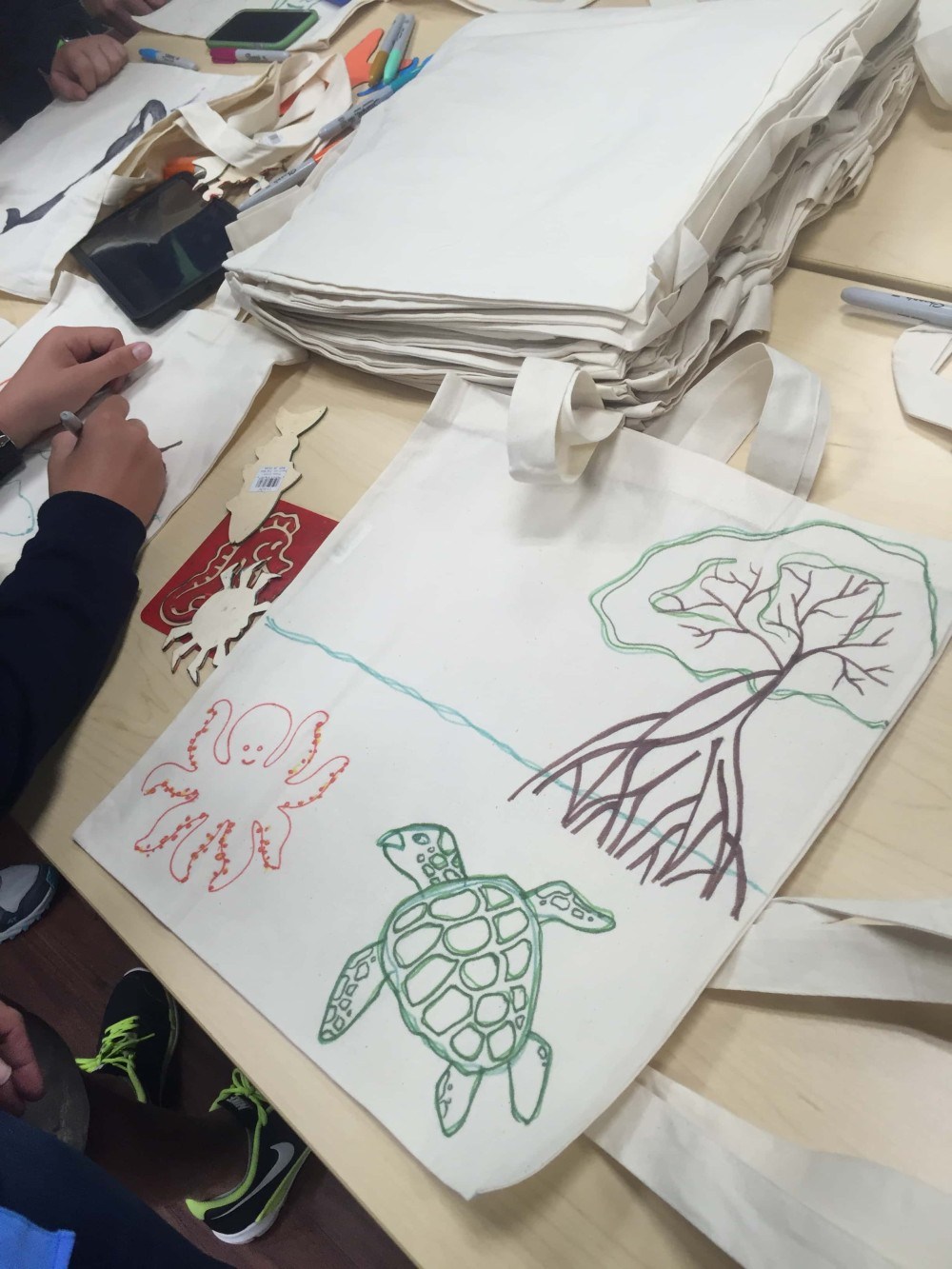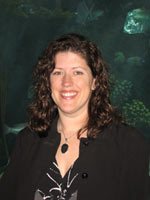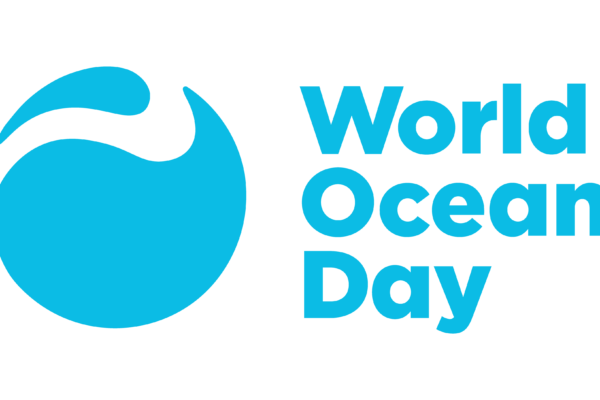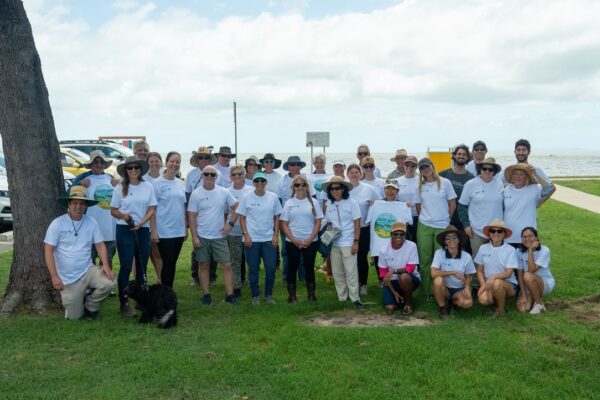This guest post, by VP of Education Debbi Stone at The Florida Aquarium, is the final in a 3-part series on their Innovative Solutions Grants+ project, supported by a grant from NOAA to The Ocean Project. The Aquarium’s project asks “Can we gain valuable insights about how to engage an underrepresented audience by working together to design the approach?” Click here to read the previous post in this series.
The Background:
With our Innovative Solutions Grant, we worked with the students and staff of DeSoto Elementary to investigate an important question: Can we gain valuable insights about how to engage an underrepresented audience by working together with members of that audience to design the approach?
As a growing population in our county is Hispanic, we have been interested in initiatives to engage this demographic. DeSoto was, in numerous ways, a perfect partner: a Title 1 School attended primarily by children whose families cite Spanish as their first language, as well as over 90% of students qualifying for free or reduced lunch. Throughout the school year, we worked with each grade level to identify an ocean problem of particular concern to students and families, as well as a solution step that they and others in the community could take to help address that issue (in keeping with the finding from The Ocean Project’s research that aquarium audiences expect, trust and appreciate when we start with the solutions, and recommend ways they can help). As discussed in our last blog post, we discovered that the children’s interests and concerns were not altogether different from what we found elsewhere. They were interested in conserving the ocean and its animals and were especially concerned about issues similar to those that resonated with other audiences. Together, we chose to focus on reducing marine debris and specifically plastic bags.
Feedback from the design phase:
We intended our project to provide a new and innovative way to gain insight into this audience, as well as how we could design meaningful engagement opportunities. Working together with the school in the design phase proved to be both informative and rewarding for aquarium staff, and, it turns out, the teachers too.
To help with our evaluation, the Lead Teacher from DeSoto Elementary obtained and consolidated feedback from all of the participating teachers about their experience with the project. Here is her summary:
What worked especially well?
- “Letting the students zero in on the issues that they wanted to explore provided ownership and contributed to increased confidence and engagement.”
- “Wrapping this project into Earth Day, something the school participates in annually, was a great idea (as it) didn’t feel like ‘another add-on.’”
- “Having a budget for materials and supplies made a huge difference!”
What might they do differently?
- “Spend more time on (developing) ‘the ask.’ This was a challenging concept for the students, and even for some of the teachers....connecting content to what they and others can do to effect positive change was a cognitive leap for them.” (A concern also raised by our staff, as noted in our earlier blog post.)
- “They wished we could do the Aquarium field trips earlier in the (process), but this is unfortunately due to (factors) outside the scope of this project”
Would recommend the project to others?
- “There was not a single teacher who indicated that this was not a worthy project and, in fact, the desire is to be able to do this annually with ongoing funding.”
- “(The teachers appreciated) that the Aquarium was so delighted by the students’ ‘spin’ on the reusable bag (experiment)…in this project, students helped us potentially solve a problem. What an opportunity for young minds!”
From design to testing!
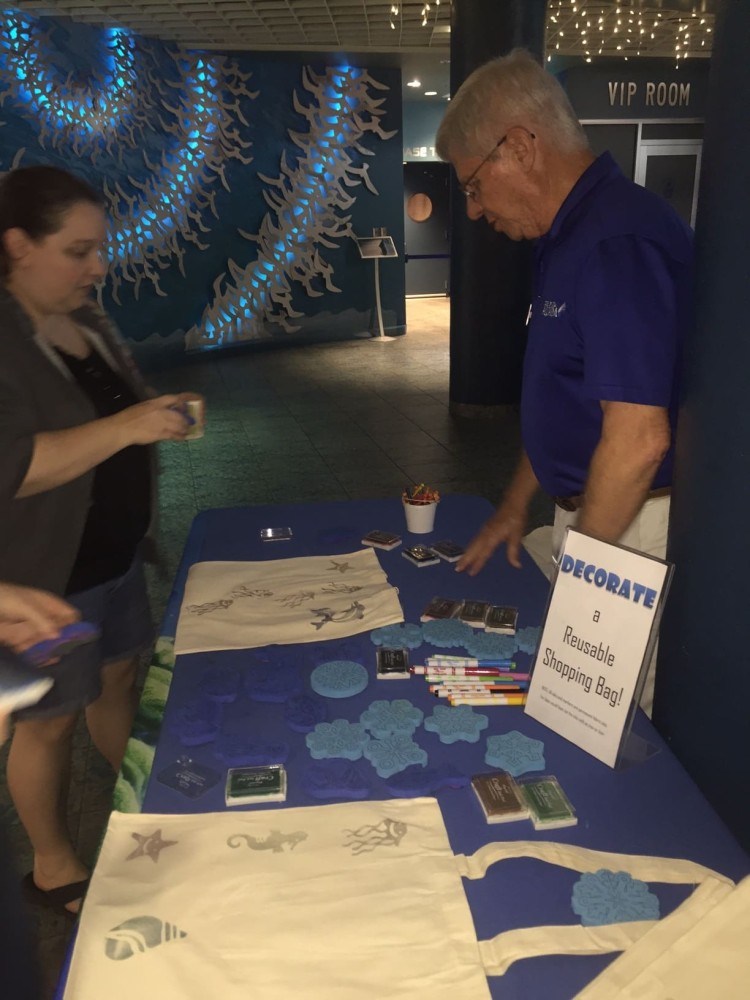 A key goal of this project was to focus on an issue that resonated with the students and to test an approach developed by the students. As noted earlier, the students from DeSoto and the staff from the Aquarium together had determined that an “ask” of using reusable instead of disposable bags was what we would explore further and test. While many organizations promote the use of reusable bags, the students added their own twist, hypothesizing that decorating one’s own bag might make the practice more fun, more personally relevant, and more likely to be implemented. And after the great feedback from the teachers, we were even more excited to try it over several days and as a stand-alone activity. We ordered plain cloth bags, stamps, ink, stencils, and a few other supplies for inspiration for a test run over nine days in December.
A key goal of this project was to focus on an issue that resonated with the students and to test an approach developed by the students. As noted earlier, the students from DeSoto and the staff from the Aquarium together had determined that an “ask” of using reusable instead of disposable bags was what we would explore further and test. While many organizations promote the use of reusable bags, the students added their own twist, hypothesizing that decorating one’s own bag might make the practice more fun, more personally relevant, and more likely to be implemented. And after the great feedback from the teachers, we were even more excited to try it over several days and as a stand-alone activity. We ordered plain cloth bags, stamps, ink, stencils, and a few other supplies for inspiration for a test run over nine days in December.
We piloted the approach we developed together, and the response was overwhelming!
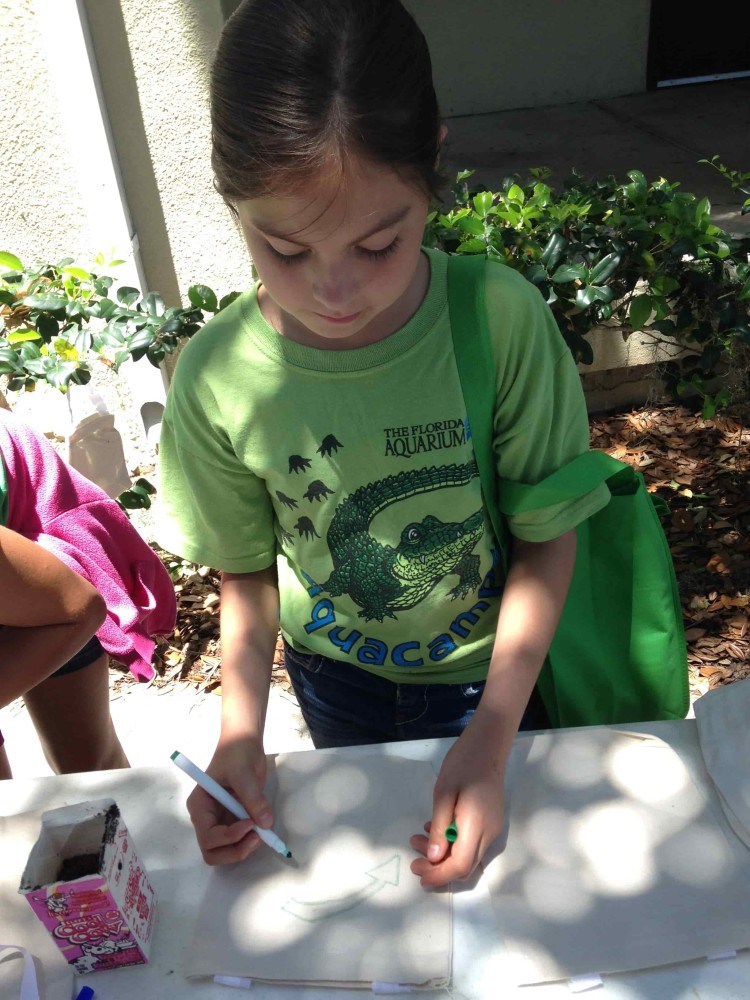 Aquarium staff set up tables during peak times. When guests approached the table, they were asked to make a verbal commitment to using reusable bags instead of disposable bags, and, once made, we gave them the opportunity to design a reusable bag of their own. Over 28 hours of testing, more than 2,735 bags were designed by our visitors. In other words, this was nearly 100 bags per hour, impressive given that we were space-limited by a table as well as each bag taking between five and ten minutes or more to make. As a comparison, for a normal activity station, we typically average less than 40 participants per hour engaging with educators. In short, there was never a break at the table. As soon as a space opened, it was filled. This was undeniably popular!
Aquarium staff set up tables during peak times. When guests approached the table, they were asked to make a verbal commitment to using reusable bags instead of disposable bags, and, once made, we gave them the opportunity to design a reusable bag of their own. Over 28 hours of testing, more than 2,735 bags were designed by our visitors. In other words, this was nearly 100 bags per hour, impressive given that we were space-limited by a table as well as each bag taking between five and ten minutes or more to make. As a comparison, for a normal activity station, we typically average less than 40 participants per hour engaging with educators. In short, there was never a break at the table. As soon as a space opened, it was filled. This was undeniably popular!
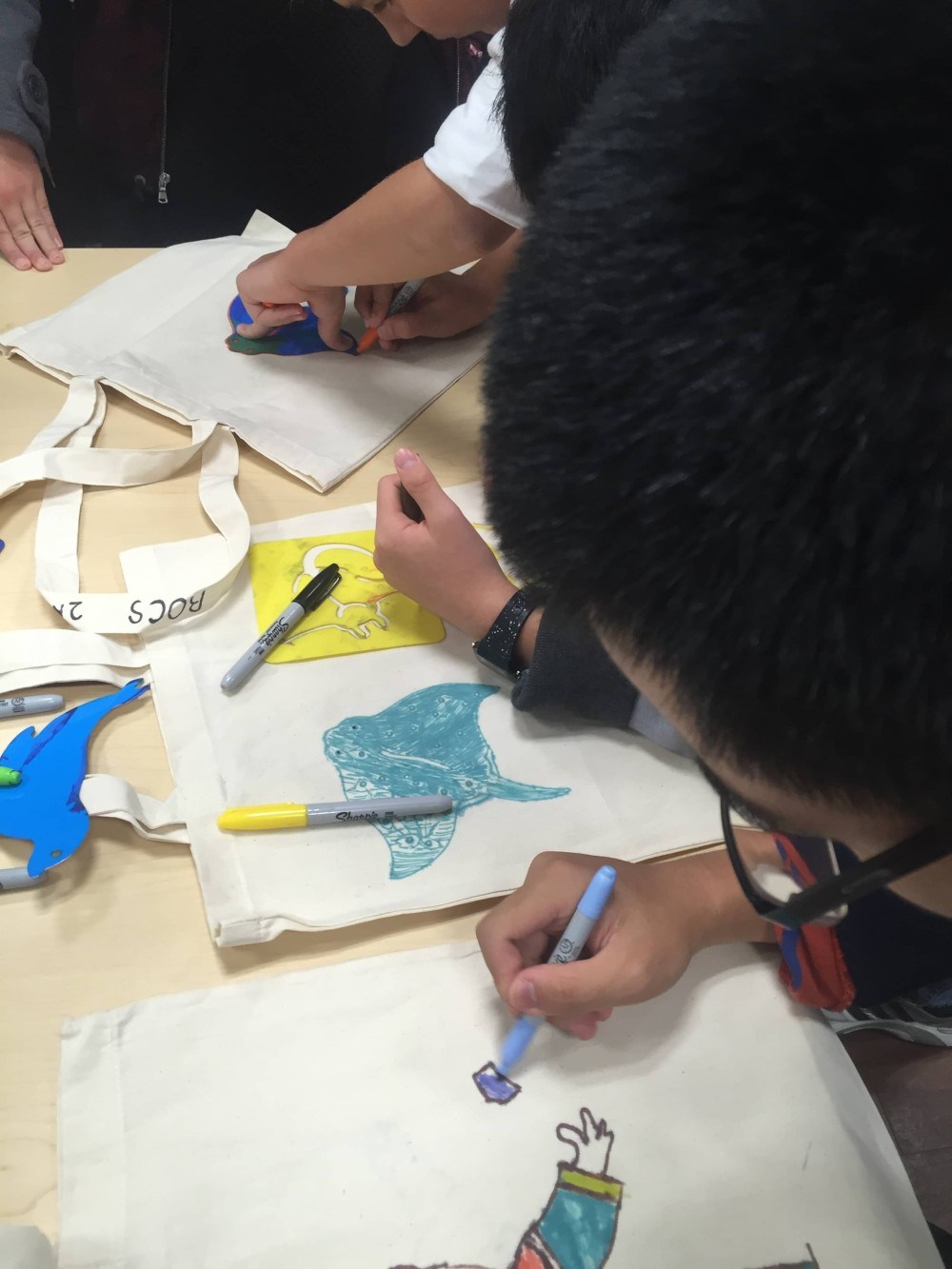 In fact, this activity was so popular that it was a challenge to do more than just keep up with the demand for the bags! Our initial plan was to investigate whether there was a difference in response if the messaging around our “ask” was connected back to its origin with the DeSoto students, rather a more traditional aquarium association (e.g., “Help sea turtles…”), and perhaps also look at differences in response among visitor groups. But in practice, the seats were refilling before we could even say, “You can make a difference by designing your own reusable bag…” and attention quickly turned to the art.
In fact, this activity was so popular that it was a challenge to do more than just keep up with the demand for the bags! Our initial plan was to investigate whether there was a difference in response if the messaging around our “ask” was connected back to its origin with the DeSoto students, rather a more traditional aquarium association (e.g., “Help sea turtles…”), and perhaps also look at differences in response among visitor groups. But in practice, the seats were refilling before we could even say, “You can make a difference by designing your own reusable bag…” and attention quickly turned to the art.
We were able to gather some qualitative feedback while the “artists” were at work, but not as much, nor as systematically, as we had hoped. We asked about the reasons why people were participating, and visitors told us that they were excited about the prospect of using their bags and indicated they planned to do so, including a common theme about designing bags to keep in their cars for grocery store trips. And when asked how they would be making a difference, it did seem as if our intent was getting through to them, as a majority of guests cited the reduction of plastics, as well as helping to ensure bags don’t end up in landfills or in the ocean.
Lessons learned
Those who staffed the table have been begging to do it again. Of the eight staff and volunteers who rotated through the staffing of the table, all were very enthusiastic. As our Education Volunteer Coordinator put it, “You would think this was entirely for the guests, but No Staff Member to show
Yet because we weren’t able to gather enough guest feedback, there are lingering questions about whether it was truly effective in terms of advancing conservation action. For example, our team reported that it was difficult to ascertain the extent to which the activity went beyond being a “craft” or “holiday gift” (given that we were trying this in December). And two team members felt it was likely that when we asked about the “why,” there was an element of guests giving the answers they suspected we wanted to hear. Another team member reported that since we were giving something “for free,” visitors might feel obligated to go out of their way to “thank us” by appearing to be extremely “on board,” something that has been raised in the past when attempting to gather visitor feedback. And it was clear that if we do this again, as we hope to do (see below!), it will be helpful to do so at a less crowded time and with more staff capacity, not only to engage the visitors, but also to more systematically track their reasons and responses.
Final takeaways
As our grant period comes to a close, here is our advice to zoo and aquarium colleagues based on our experience:
- If you want to engage a new or underserved audience, start by reaching out to members of that audience for insights and ideas.
- If there is an issue or action of common interest between your audience and you, but you worry, as we did with reusable bags, that it is “old news,” consider a new approach. The children’s idea to allow guests to customize or otherwise make a reusable bag more “their own” proved to be a fun way to engage visitors, and, we hope, just the beginning of a deeper relationship with the school and the Hispanic community.
- When testing a new approach, control your variables! As noted above, we worry, for example, that we didn’t adequately account for the impact of the holiday season when we tested our idea.
- Be prepared for success. We didn’t expect the high demand at our stations and struggled to keep up, especially with our monitoring and evaluation plans.
- Find ways to follow-up with interested guests. We will continue to follow up with the students and school, but we may have missed an opportunity to continue the engagement with the guests who were so keen to create a bag.
An anticipated epilogue
Because this proved to be so popular with our guests, we’re going to present this activity again in June around World Oceans Day weekend using funds in our operating budget or with external funding for more bags and art supplies. For all of the reasons cited above, we are intrigued by the promise of our test period and want to continue to work with The Ocean Project to help answer our lingering questions about the impact on our guests.
Given how the activity essentially “sold itself,” we will focus less on testing different ways to invite people to participate, and focus more on assessing the impact of having participated. To do this, we plan to use an exit survey with a set of questions covering their concern about the problem, their opinion of the Aquarium and their feelings about making a difference, then compare and contrast the responses of those who participated (i.e. those who made a promise and designed a bag) and those who did not (i.e. those who simply visited the Aquarium), while also looking to see if, as our experience with the students suggested, this activity goes over especially well with our Hispanic guests.
Through this experience, we have learned an invaluable lesson about deliberately considering how to pilot new and innovative ways to approach goals. We may find ourselves, at times, falling back into “tried and true” methods for engaging our audiences, yet if we’re simply maintaining success or not growing, it may be time to consider a new spin on our efforts. In short, we still haven’t answered all of our questions…yet isn’t that part of the thrill of striving to make a difference in the world? So stay tuned!
Debbi is Vice President of Education at The Florida Aquarium and has been challenging herself and others to move beyond information… and onto action! She enjoys living in harmony with all things furry, scaly, feathery, and slimy, whether on land or under the water. She is always eager to work with The Ocean Project and its partners and considers collaborations key to making a positive difference in the world.

